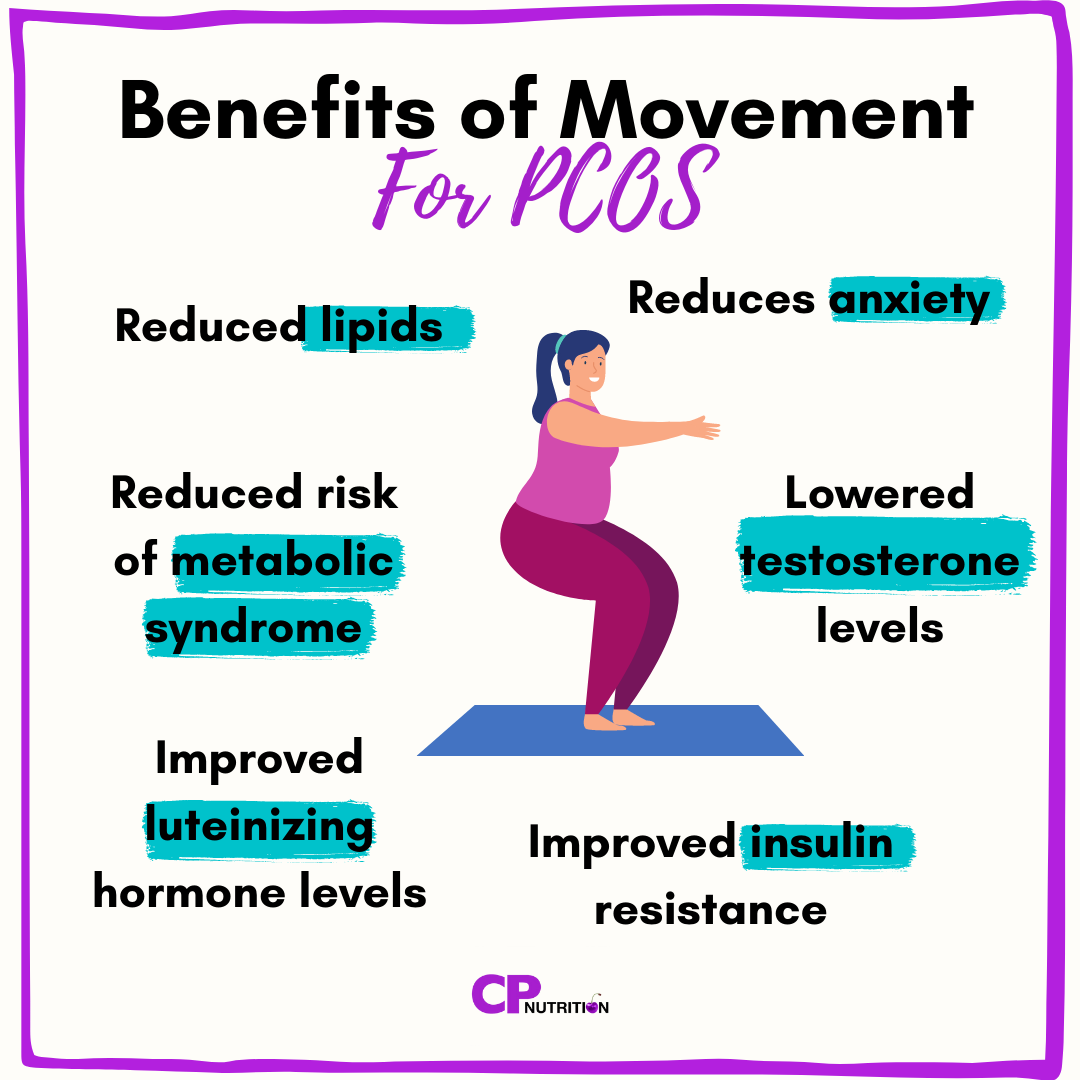What is the Best Exercise for PCOS?
There are so many benefits of regular exercise including lowering the risk of heart disease, type 2 diabetes, stroke and some cancers plus exercise can boost self-esteem, mood, sleep quality and energy (1).
PCOS and Exercise
When it comes to PCOS, there is a lot of confusion surrounding what exercise people should be doing to help with symptom management. Polycystic ovary syndrome (PCOS) is a chronic hormone disorder impacting 1 in 10 women in the UK (2). There are a variety of symptoms associated with PCOS including acne, oily skin, rapid weight gain, irregular periods, difficulty getting pregnant, excess hair growth and hair loss on the head (3).
The Ups and Downs of Exercise
It is important to remember that although movement can be so beneficial, if it is adding extra stress (i.e. if sleep and rest are being compromised) then it may not be as beneficial as you hoped. Aim to have your sleep hygiene and stress management techniques fleshed out before introducing a regular movement routine.
The Power of Movement for PCOS Management
For PCOS, regular exercise can be incredibly beneficial because increasing our muscle mass through movement can help with glucose clearance from circulation, which helps manage the insulin resistance seen in up to 95% of people with PCOS (4).
Consider trying power sports like weight training as people with PCOS tend to have high levels of free testosterone (5). A study of 326 women with PCOS found that women who engaged in regular vigorous exercise (a minimum of 75 minutes per week) had a better glucose tolerance, less likely to have acanthosis nigricans (a skin condition where the skin is thicker or darker in places) and lower risk of metabolic syndrome, independent of energy expenditure or BMI (6).
The Best Type of Exercise for PCOS…..
It is important to note that there is no one “perfect” exercise for PCOS - the type of movement, the frequency of movement and the intensity of movement are completely up to you. A review of 8 studies (including 3 randomised control trials) found that in people with PCOS type, length and frequency didn’t impact symptoms and instead clinical benefits were seen in sustainable, less intensive studies (7).
The best exercise routine for you is one that is sustainable and enjoyable to you. You may find it useful to ask yourself “what type of movement would I do if it had no impact on the way I looked?”.
References
NHS, 2019. Exercise health benefits [online]. Available from: https://www.nhs.uk/live-well/exercise/exercise-health-benefits/
BDA, 2016. Polycystic Ovary Syndrome – the fundamentals[online]. Available from: https://www.bda.uk.com/resource/polycystic-ovary-syndrome-the-fundamentals.html
NHS, 2019. Symptoms Polycystic ovary syndrome[online]. Available from: https://www.nhs.uk/conditions/polycystic-ovary-syndrome-pcos/symptoms/
Barber TM, Dimitriadis GK, Andreou A, Franks S. Polycystic ovary syndrome: insight into pathogenesis and a common association with insulin resistance. Clin Med (Lond). 2016 Jun;16(3):262-6.
Hirschberg AL. Female hyperandrogenism and elite sport. Endocr Connect. 2020;9(4):R81-R92. doi:10.1530/EC-19-0537
Greenwood EA, Noel MW, Kao CN, Shinkai K, Pasch LA, Cedars MI, Huddleston HG. Vigorous exercise is associated with superior metabolic profiles in polycystic ovary syndrome independent of total exercise expenditure. Fertil Steril. 2016 Feb;105(2):486-93. doi: 10.1016/j.fertnstert.2015.10.020. Epub 2015 Nov 6. PMID: 26551442.
Harrison CL, Lombard CB, Moran LJ, Teede HJ. Exercise therapy in polycystic ovary syndrome: a systematic review. Hum Reprod Update. 2011 Mar-Apr;17(2):171-83. doi: 10.1093/humupd/dmq045. Epub 2010 Sep 10. PMID: 20833639.



